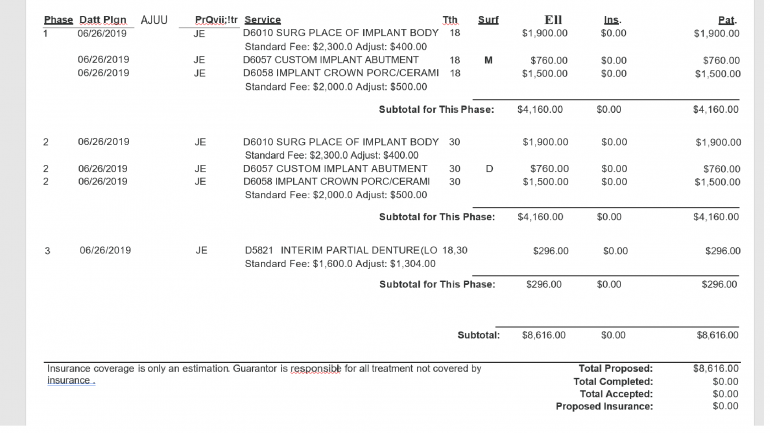
Dental Code D2980: Crown repair necessitated by restorative material failure
Dental restorations, such as crowns, are designed to be durable and long-lasting, but in some cases, the restorative materials used can fail, requiring repair or replacement. Dental Code D2980 specifically addresses the procedure for repairing a crown when the restorative material has failed, ensuring the tooth is properly restored and protected.
What Does Dental Code D2980 Mean?
Dental Code D2980 refers to the procedure of repairing a dental crown when the restorative material, such as the dental cement or the crown itself, has failed. This could be due to a variety of reasons, including physical damage, wear and tear, or improper fit. The goal of this procedure is to restore the crown to its original function and appearance, allowing the patient to maintain their oral health and proper tooth function.
Assessing the Crown Failure
The first step in the crown repair process is for the dental professional to thoroughly examine the affected crown. They will visually inspect the crown, looking for any cracks, chips, or other signs of damage. They may also use diagnostic tools, such as X-rays, to evaluate the underlying tooth structure and determine the extent of the damage. This assessment helps the dentist understand the root cause of the crown failure, whether it's due to physical damage, wear and tear, or improper fit. By identifying the issue, the dentist can develop a tailored treatment plan to address the problem effectively.
Removing the Existing Crown
If the crown is beyond repair, the dental professional will need to carefully remove the existing crown. This is a delicate process, as they must ensure that the underlying tooth structure is not damaged during the removal. The crown may be gently pried off or, in some cases, the crown may need to be cut away. Careful removal is crucial to avoid further damage to the tooth, which could complicate the crown replacement process. The dentist will use specialized tools and techniques to carefully extract the crown without harming the natural tooth structure.
Preparing the Tooth for a New Crown
Once the existing crown has been removed, the dental professional will need to prepare the tooth for a new crown. This may involve removing any remaining dental cement or restorative materials, as well as shaping the tooth to ensure a proper fit for the new crown. The tooth preparation step is essential to create a clean and stable foundation for the new crown. The dentist will ensure that the tooth is properly shaped and free of any debris or old materials, allowing the new crown to be securely bonded to the natural tooth.
Fabricating the New Crown
The dental professional will then take impressions or digital scans of the prepared tooth, which will be used to fabricate a new crown. This crown may be made from a variety of materials, such as porcelain, metal alloys, or a combination of both, depending on the patient's needs and preferences. The choice of material will be based on factors such as the location of the tooth, the patient's aesthetic concerns, and the overall strength and durability requirements. The dentist will work closely with a dental laboratory to ensure the new crown is crafted to the highest standards.
Cementing the New Crown
Once the new crown has been fabricated, the dental professional will carefully cement it into place. This involves applying a specialized dental cement to the inner surface of the crown and the prepared tooth, then firmly pressing the crown into place. The cement will harden, securely bonding the crown to the tooth. The proper application of the dental cement is crucial to ensure a strong, long-lasting bond between the crown and the natural tooth structure. The dentist will take care to ensure the cement is evenly distributed and that no excess cement remains, which could affect the fit and function of the crown.
Adjusting the Bite
After the crown has been cemented, the dental professional will check the patient's bite to ensure that the new crown is properly aligned with the other teeth. If necessary, they will make minor adjustments to the crown to ensure a comfortable and functional bite. This step is important to prevent any issues with chewing, speaking, or overall oral function. The dentist will carefully assess the patient's bite and make any necessary refinements to the crown's shape or position to optimize the fit and comfort.
Follow-up Care
Following the crown repair procedure, the patient will need to maintain good oral hygiene habits, such as brushing and flossing regularly, to help ensure the longevity of the new crown. The dental professional may also recommend scheduling regular check-ups and cleanings to monitor the crown and the overall health of the patient's mouth. Proper home care and professional dental visits are essential to monitor the crown's condition and address any potential issues before they become more serious. The patient's diligence in maintaining their oral health will contribute to the long-term success of the crown repair.
Summary of Dental Code D2980
Dental Code D2980 refers to the procedure of repairing a dental crown when the restorative material has failed. This process involves carefully removing the existing crown, preparing the tooth for a new crown, fabricating and cementing the new crown, and making any necessary adjustments to ensure a proper fit and function. By repairing a failed crown, patients can maintain their oral health and the proper function of their teeth.
If you're experiencing issues with a dental crown, it's important to consult with a qualified dental professional as soon as possible. They can assess the problem and determine the best course of action, which may include a crown repair procedure under Dental Code D2980.
Ready to explore your options for affordable, high-quality dental care? Check out Dr. BestPrice, a leading dental auction platform that connects patients with top-rated dentists in their area. Visit our website to learn more and get started.
